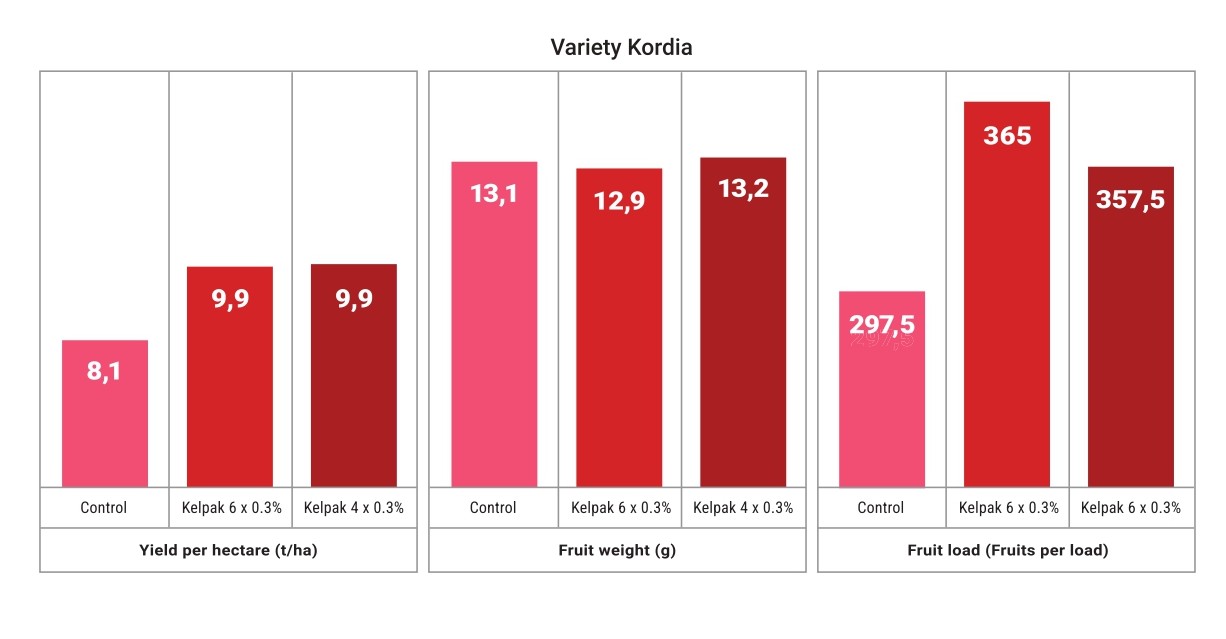'The Chilean sweet cherry industry needs its own varieties. Until now, we have only grown imported varieties; however, Chile needs new germplasm adapted to our climatic, logistical and commercial conditions in order to maintain its competitiveness as the main exporter in the southern hemisphere,' says Professor Marlene Ayala, lecturer and researcher at the Universidad Católica de Chile.
She is on her way to achieving this goal as a breeder of new Chilean varieties, with 24 of the 30 advanced selections already grafted and under study. Most of Ayala's career, more than 24 years at university alone, has been devoted to work on the physiology and general management of deciduous fruit trees. He works closely with Chilean growers and exporters of sweet cherries.
'I provide advice as a consultant for specific plans, such as innovative planting projects, orchard management practices, product development and research and development on request. In 2010, a major development project, the Consorcio Tecnológico de la Fruta, was launched, consisting of the Chilean Fruit Exporters Association, several export companies and the Pontificia Universidad Católica de Chile (PUC).
A traditional selection programme for sweet cherries was established to obtain new cultivars suited to the Chilean climate and export market. Since then, I have been involved in breeding and, at the moment, we have more than 30 advanced selections grafted and under study. Twenty-four of them have been evaluated for yield, quality and post-harvest life'.
Ayala emphasises that in addition to producing high-quality fruit, the new cherry varieties must be adapted to Chile's climatic conditions. They should require little cold in areas with warm winters (central and northern Chile). The new varieties must tolerate rain and frost and not break during storage. They must also adapt to climatic changes, especially in terms of tolerance to abiotic stresses.
Another crucial aspect is that the new varieties not only survive, but that a logistic chain can be created to connect them to distant markets. "Chile needs new early and late varieties to avoid harvesting and processing a large volume of fruit in December and early January.
We harvest most of our commercial orchards (mid-season varieties) in a very short period of time, which creates logistical problems of packaging, storage and shipping. In addition, the accumulation of fruit in a short period of time reduces growers' profits. We have to redistribute our production, encouraging fruit production earlier or later in the season,' Ayala explains.
She emphasises that markets require certain characteristics. 'A new variety for Chile must have good size (>28 mm), sweetness (>17 Brix) and hardness (more than 85 durofel units). It must be heart-shaped, crisp, have a long pedicel and a dark red skin and flesh colour.
A very important aspect for Chile is the storage capacity, as we are far from the Asian markets. The shipping and storage potential of a new variety of sweet cherries is crucial for the Chilean industry. Early and late varieties have higher prices per kilo. The best prices are obtained with cherries harvested before 20 November and after 30 January. Currently, the early harvests are the most profitable for Chilean producers,' says Ayala.
 Marlene Ayala, lecturer and researcher at the Universidad Católica de Chile.
Marlene Ayala, lecturer and researcher at the Universidad Católica de Chile.
Diversified research work
In addition to genetic improvement of sweet cherries, his research also deals with aspects such as sweet cherry physiology and horticultural management. Since 2010, he has been working on different training systems for high-density and pedestrian orchards. The focus is on calcium uptake and distribution to increase the quality and storage potential of the sweet cherry.
In 2012, he began investigating the use of plastic covers to prevent fruit splitting, but now his 'main focus is on manipulating the harvest period and fruit quality (hardness)'. "We are currently conducting physiological and production trials in Chile's Central Valley, where we are studying the effect of the cover on water use efficiency, harvest date and fruit characteristics."
"It is very challenging to teach future Chilean horticulturists and maintaining contact with the industry allows me to enrich my knowledge and experience, improving my ability to pass on applied knowledge to undergraduate and postgraduate students and, at the same time, to be more efficient in finding solutions to the daily and strategic problems faced by Chilean growers."
Areas where companies need more help
"In my opinion, Chilean companies especially need help in finding innovative field management strategies, as the yield, quality and storage potential of sweet cherries depend on good horticultural practices. Traditionally, we have been producing cherries in the Central Valley of Chile, but new orchards are being planted further north and south of the country'.
"The new conditions require different strategies. This is even more important considering that climate change is affecting our orchards, making evident new technological requirements to cope with emerging biotic (pests and diseases) and abiotic (drought and extreme temperatures) stresses. In addition, companies must continue their efforts to improve post-harvest technologies, as reaching our core market (Asia) requires a very long journey."
Meeting current and future market needs
My research work has always been related to finding solutions to the problems of the Chilean cherry industry and my career has progressed hand in hand with the development of the sector. Most of my fellowships are in applied research, focused on finding solutions to problems that reduce or limit the competitiveness of the sector."
"A close relationship with cherry growers and others in the sector has enabled the research and development efforts made at the University to be quickly transferred to producers and exporters," Ayala concludes.
Source: Portal del Campo
Images: Portal del Campo
Cherry Times - All rights reserved











